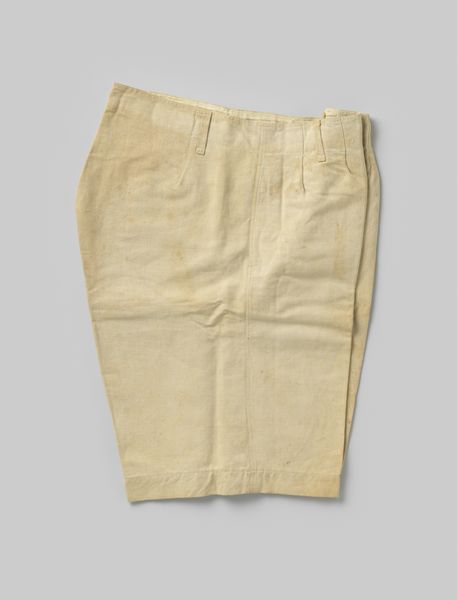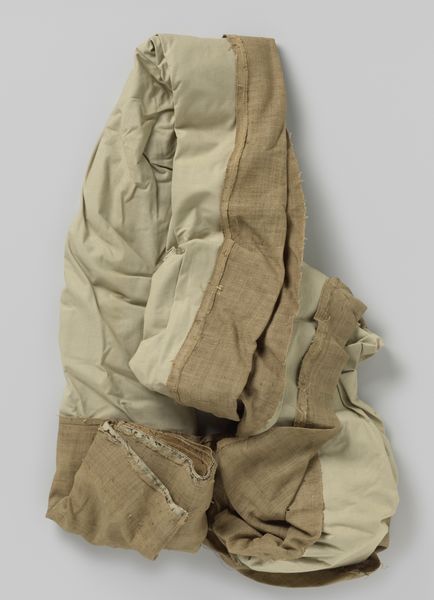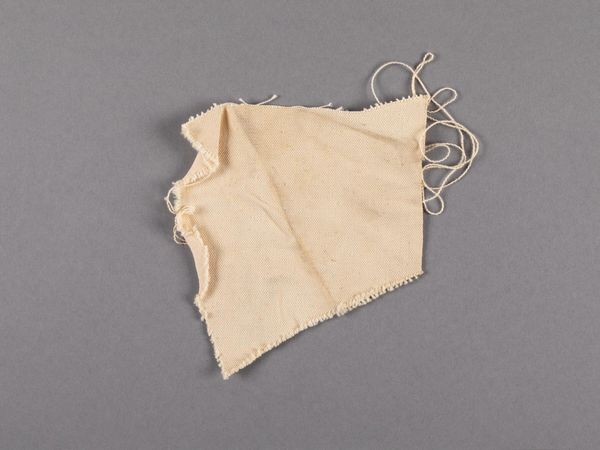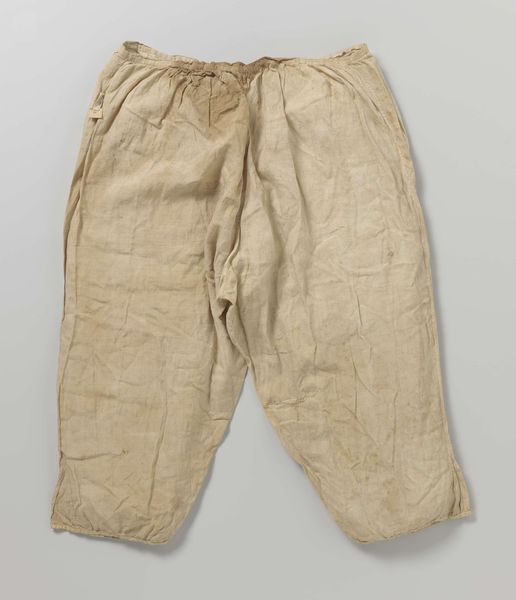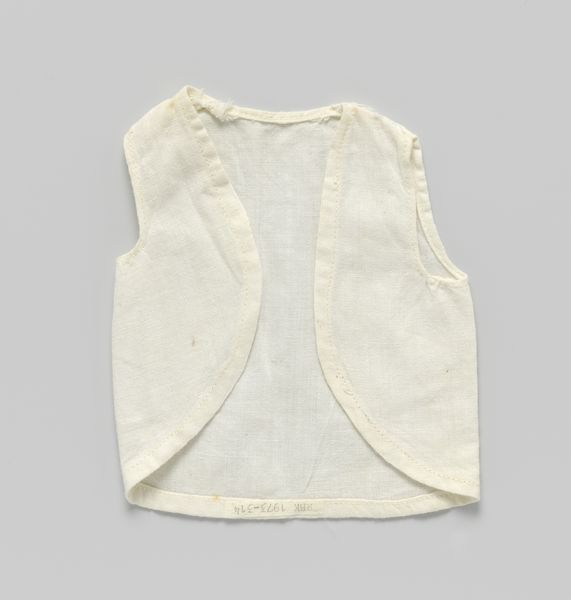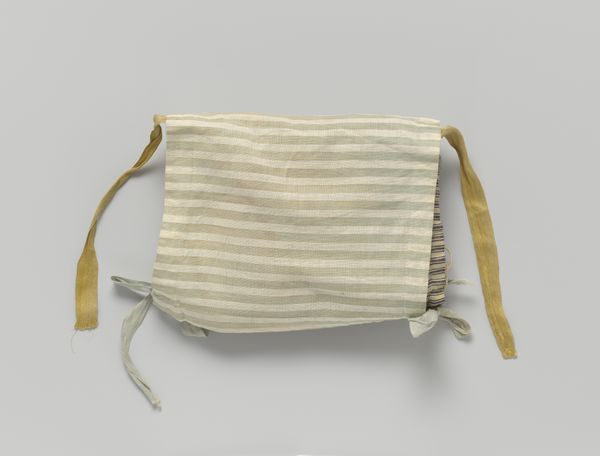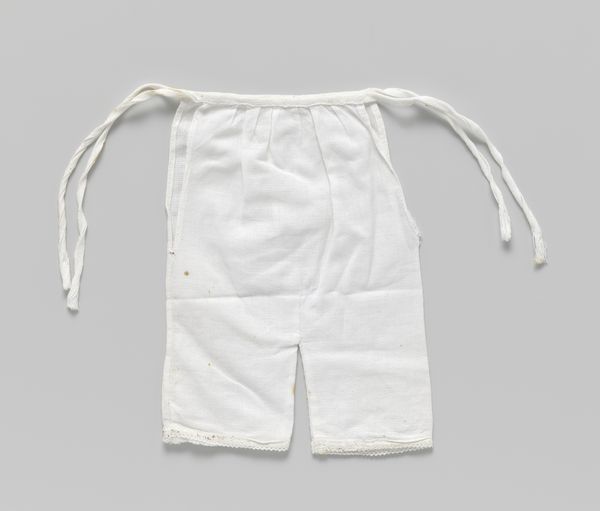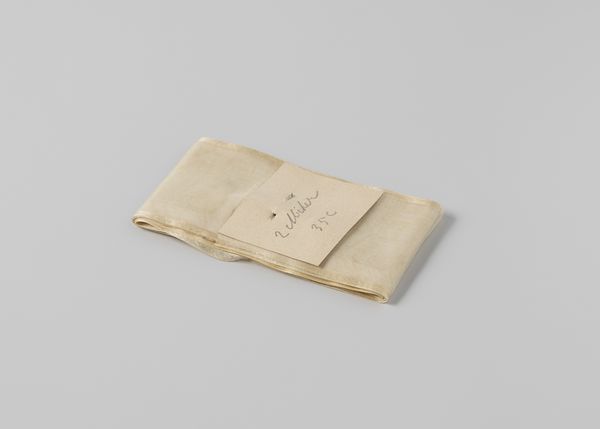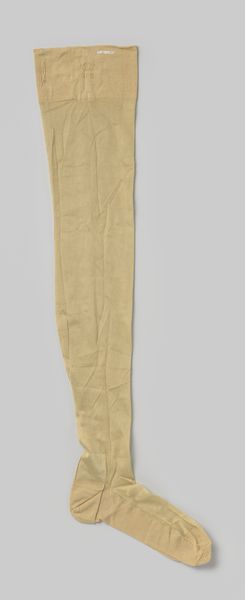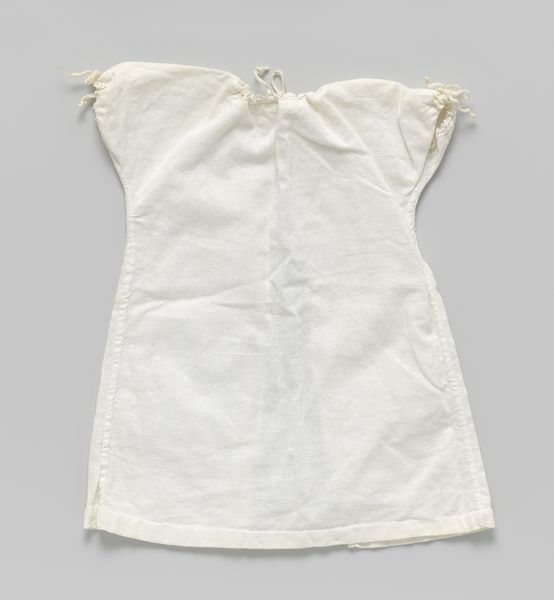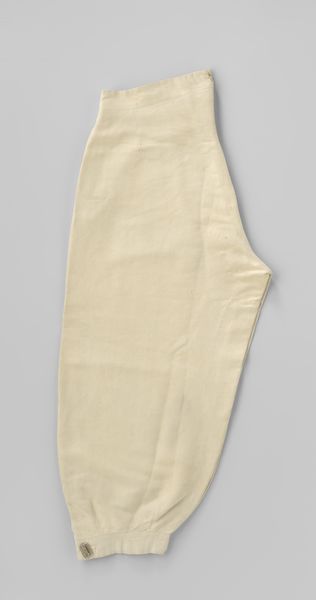
Zakje van verklikker met portret van Hendrik Danielszoon Hooft, burgemeester van Amsterdam 1780 - 1787
0:00
0:00
anonymous
Rijksmuseum
textile, photography
#
dutch-golden-age
#
textile
#
photography
Dimensions: width 45.5 cm, height 7.5 cm, depth 33 cm, height 9.9 cm, width 10.4 cm
Copyright: Rijks Museum: Open Domain
Curator: This rather unassuming object is titled "Zakje van verklikker met portret van Hendrik Danielszoon Hooft, burgemeester van Amsterdam," which translates to "Bag of the Informer with Portrait of Hendrik Danielszoon Hooft, Mayor of Amsterdam." The anonymous work, made of textile, likely dates from 1780 to 1787. Editor: There's something about its modesty that really grabs me. It's just a small, utilitarian-looking drawstring bag, and the color, a faded ochre, speaks of age and history, even wear. It's the antithesis of pomp, which is interesting considering its connection to a mayor. Curator: Exactly. Bags like this were used by patriots during the late 18th century as a way to covertly collect signatures on petitions and declarations. These were politically charged times in the Netherlands, with growing discontent toward the stadtholder's regime. Editor: So, the bag becomes a symbol of clandestine resistance, a physical object embodying the spirit of rebellion. A tangible metaphor for hiding dissent in plain sight. That portrait within must have added a layer of defiance, practically daring authorities to expose the movement's leadership. I wonder about the gender and class dynamics inherent in its circulation and the act of its sewing. Curator: Indeed. What makes this object especially powerful is the layering of symbolism. The bag itself, as a container, becomes representative of hidden intentions, while the act of including Hooft's portrait can be interpreted as a sign of loyalty, of open advocacy. Hooft, in that era, occupied the uneasy space between established authority and emerging democratic ideals. His image lends a respectability to the clandestine nature of the activity, even though he, personally, did not fully commit to all Patriot ideals. Editor: I'm particularly struck by how this textile item persists through time as a witness. It bears the traces of human handling, secrets whispered, and revolutionary zeal, defying neat categories of art, craft, and political artifact. Looking at its muted palette, almost disappearing into the background, makes me contemplate the legacy of resistance – often unseen, easily overlooked, yet integral to shaping social change. Curator: Absolutely. Objects like these are vital for understanding how symbols become embedded within material culture, offering us access to layers of meaning far beyond their immediate function. Editor: I agree, reflecting on it, its humble form serves as a powerful reminder of the everyday acts that fuel movements for change, the whispers of dissent woven into the fabric of our histories.
Comments
No comments
Be the first to comment and join the conversation on the ultimate creative platform.
